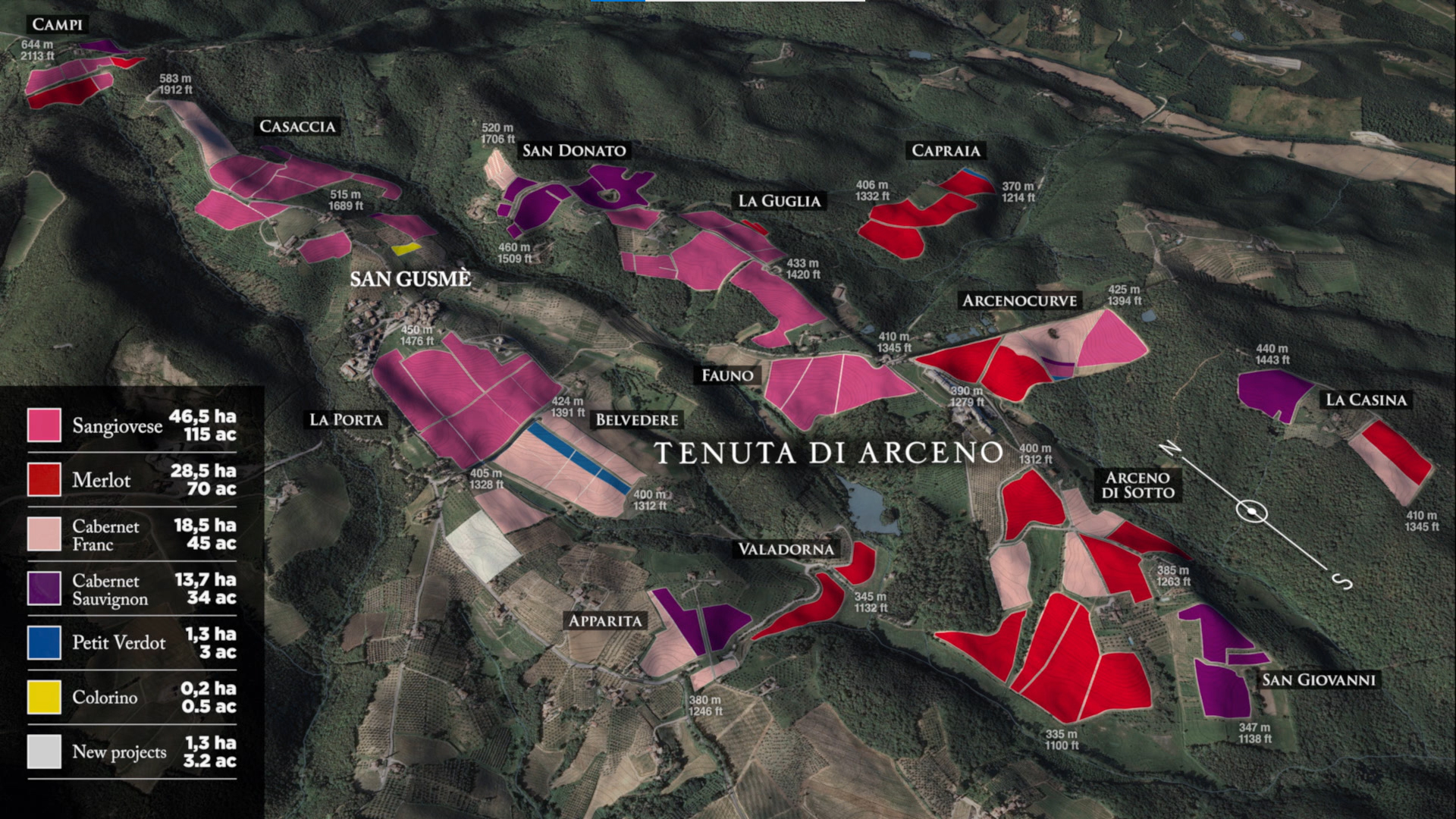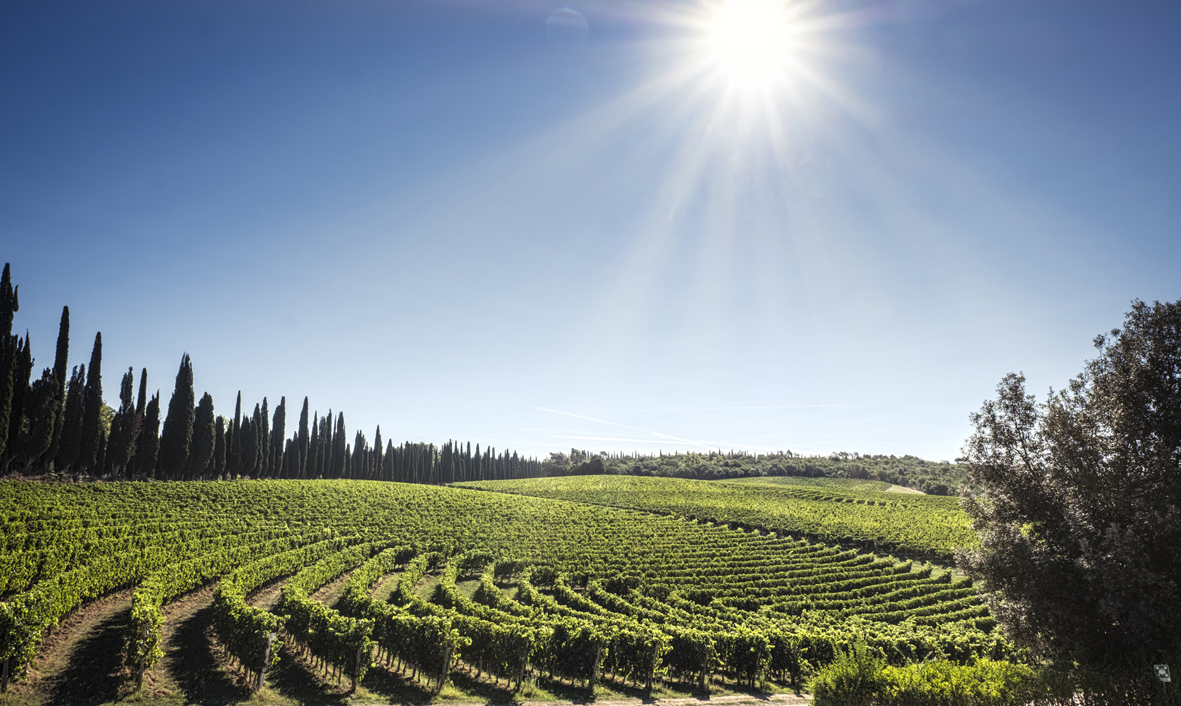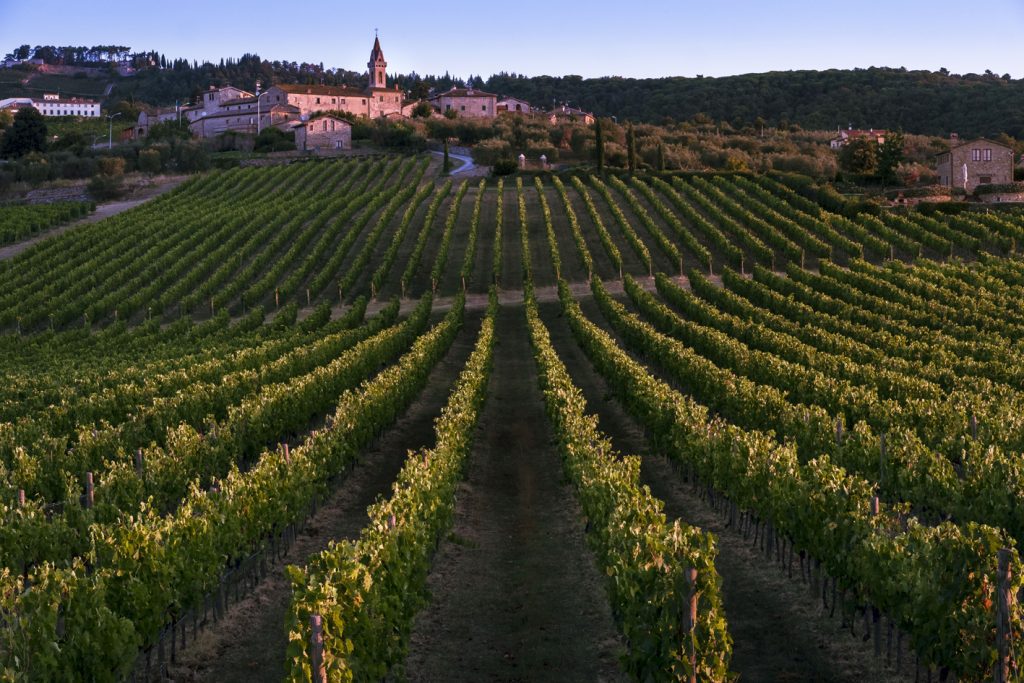Committee member Liz Sagues reports on the emergence of micro crus at the ancient 1,000-hectare estate that can help to place similar emphasis on both savouring Sangiovese and producing stunning Super Tuscans.
Whither the future of Tuscany? In Chianti Classico or in Super Tuscans? That was one of the questions posed as participants in a recent ‘CWW Let’s talk about…’ webinar toured the hills, a 50-minute twisting drive north-eastwards of Siena.
At Tenuta di Arceno, the estate under scrutiny, the balance is – just – in favour of the classic DOCG of the region, and Sangiovese is likely to remain ahead of the likes of Cabernets Sauvignon and Franc, Merlot and Petit Verdot in future plantings. “But I love them all, for different reasons,” said winemaker Lawrence Cronin. Difference is a very crucial word for the 1,000-hectare estate, bought in 1994 by Jackson Family Wines. The new owners, explained the webinar’s other speaker, brand ambassador Pepe Schib, saw the potential possible from a big change in production methods – notably the creation of micro crus in the 110 hectares of vines.
The video that Pepe and Lawrence showed made the point far better than any words. We looked down on a hilly, fascinatingly varied area, where height and exposition give marked differences in temperature and soils change significantly. The patchwork of vineyards these clever visuals revealed gave a clue as to the unusual approach. No wholesale, regimented rows of Sangiovese. Rather, vines aligned with contours or soil pattern, and every plot planted with the variety best suited to it: Merlot on the lower, warmer clays; Sangiovese high up on the less welcoming sandstone; other varieties slotted between according to their preference. “Cabernet Franc works just about everywhere,” Lawrence commented, noting the vine’s adaptability to climate change. For that last comment, there’s particular proof in the tasting (participants in the Let’s talk about… session were sent samples afterwards – thank you, Luxx PR).

In all, the estate makes six wines. The three Chianti Classicos begin with Anata, in which some Merlot is blended with the Sangiovese, for earlier approachability. The Riserva follows, to which Lawrence adds around 10% Cabernet Sauvignon for a little extra central tannic structure, and the flagship is pure Sangiovese Gran Selezione Strada al Sasso, using grapes from the lowest-yielding vines and wines from the best barrels.
The three Super Tuscans are the multi-variety blend il Fauno di Arcanum, Merlot-dominant Valdorna, and the pure Cabernet Franc Arcanum: a glorious, concentrated, multi-layered wine sourced from different blocks, which tempts me towards a super self-indulgency of tasting notes that have no place in an article intended for wine professionals.
Chianti Classico, Lawrence acknowledged, is the most difficult to make – the essential skill being to balance the fruit and acid profile of high-acid Sangiovese. Throughout there is variation in winemaking practice, year on year, generally with specifically chosen yeasts. The use of natural yeast can lead to higher VA, he replied to a questioner. But no other additives are used, he stressed. Despite its long historic background, the name Arceno derives from Etruscan, or possibly Greek – the estate has not yet gone down the route to amphorae or other classical wine fermenters, though that might just change in future for Sangiovese, at least.

It’s harder to avoid vineyard treatments in humid Tuscany than in California, where he began his winemaking career, Lawrence continued. But sexual confusion rather than chemicals is the action against insects; prunings are chopped back into the soil; there are natural cover crops; and two weather stations provide information, so unnecessary spraying can be avoided. “We do the minimum possible.” Vine age helps here: there’s a ‘sweet spot’, he argues, of around 10 to 20 years. Beyond that, disease hits: he quotes the example of a 1995-planted plot where two-thirds of the vines have gone.
To end, let’s go full circle and return to that initial question. Pepe and Lawrence expanded their answer, explaining that early on in the Jackson ownership, with the US market firmly in mind, the emphasis was more on the much-demanded Super Tuscans. Since then, the quality of Sangiovese has steadily improved and the Americans – who remain Tenuta di Arceno’s biggest customers – are changing their attitudes to the grape’s acid levels. Chianti Classico is winning more supporters among them, though there remains a promising future for both wine types, our speakers emphasised.
Watch the full session here: https://youtu.be/GJRkd2kYMi8
And put July 19, 2pm BST, in your diaries for another Let’s talk about… Chianti Classico, when the UGAs (the 11 new Additional Geographic Units, sub-regions intended to help explain the diversity of the area) will be the topic.

